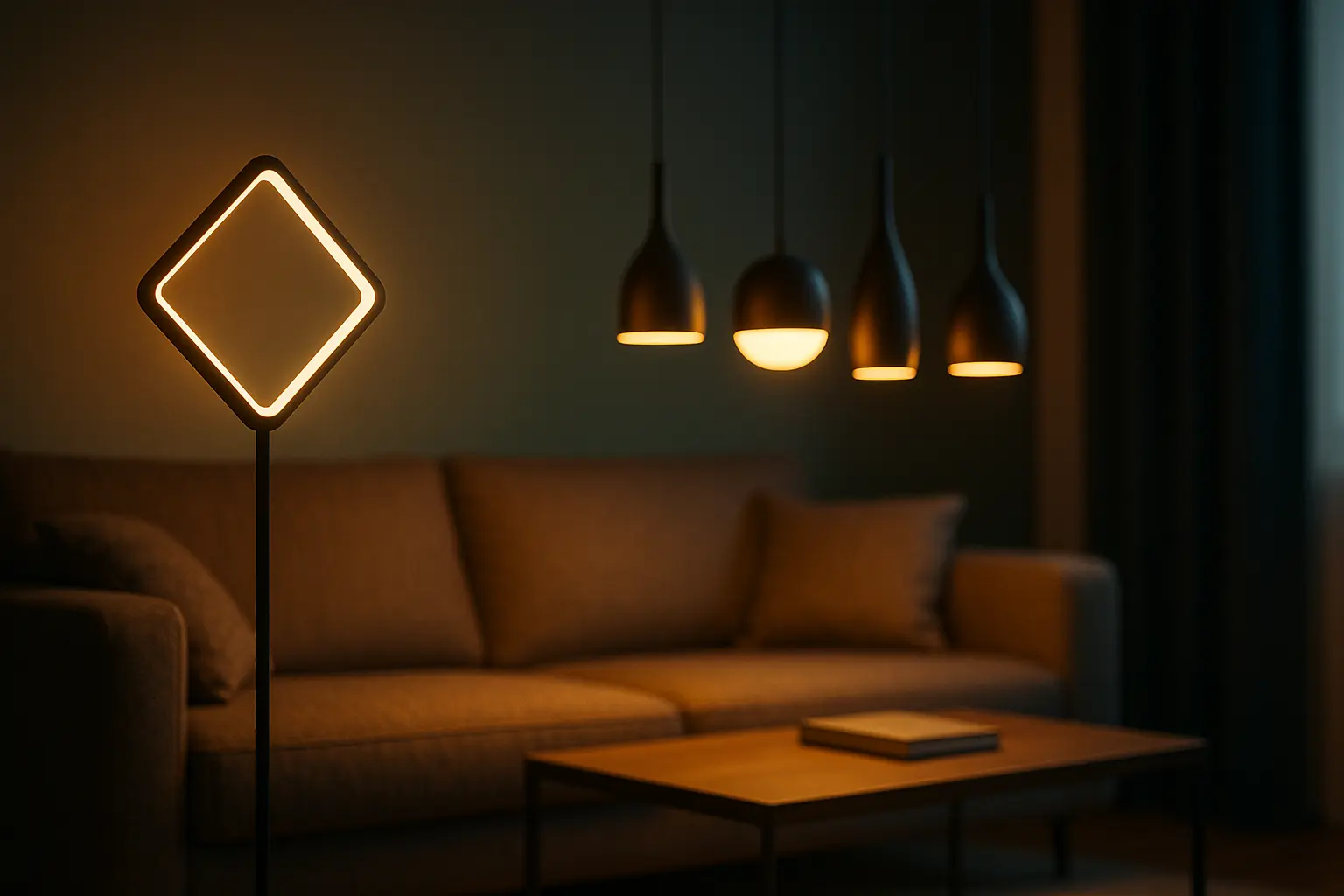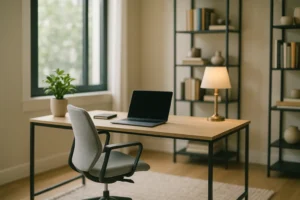Biophilic design: bringing nature indoors for wellness and aesthetics
“In every walk with nature, one receives far more than he seeks,” mused John Muir, the renowned naturalist. These words ring truer than ever in our modern, urban environments. Our homes and workplaces often feel disconnected from the natural world, leading to a growing yearning for green, serene spaces. Enter biophilic design, a revolutionary approach that harmoniously blends the outdoors with our indoor lives, creating environments where both aesthetics and wellness thrive.
In this article, we will venture into the essence of biophilic design, exploring its fundamental principles, the interplay of natural elements, and its profound impact on our physical and mental health. Whether you’re redesigning a corporate office or your cozy living room, immersing yourself in the world of biophilic design might just be the refreshing change you’ve been seeking.
The Foundation of Biophilic Design: Reconnecting with Nature
Biophilic design goes beyond merely adding a few potted plants to your living room. It delves into the intricate web of connections between humans and nature, rooting itself in our innate desire for natural surroundings. By incorporating elements of nature into the interior environments we inhabit, we create spaces that nurture our wellbeing.
At the heart of biophilic design lies the principle of fostering a strong connection between individuals and the natural world. It’s about seamlessly integrating elements like natural light, fresh air, and organic materials into indoor spaces. This approach not only enhances the aesthetic appeal but also nurtures our physical and psychological health.
Imagine an office flooded with natural light, its walls adorned with vertical gardens, and streams of water trickling gently in the background. Such spaces invigorate the senses and stimulate creativity, reducing stress and elevating well-being. By weaving nature’s tapestry into our interior ecosystems, we bridge the gap between the outside world and our daily lives, fostering an environment that is well-rounded, vibrant, and alive.
Biophilic design challenges the conventional notion of interior design, advocating for a return to nature in the most urban settings. It’s an invitation to reimagine our surroundings and create an environment that celebrates and reaffirms our bond with the natural world.
Designing Living Spaces with Nature’s Elements
The allure of biophilic design lies in the subtle yet profound ways it integrates the natural world into our living spaces. From the gentle sway of leaves in an indoor garden to the tactile pleasure of organic materials underfoot, every element contributes to a comforting sense of belonging.
Plants, with their lush foliage and vibrant colors, are the cornerstone of any biophilic space. They not only purify the air but also infuse life into sterile environments. Think beyond the traditional potted plant; consider vertical gardens or cascading vines that mimic the wild exuberance of nature. These living installations offer a dynamic visual connection to the outdoors, engaging our senses and lifting our spirits.
Water features, too, have a unique calming effect. The melodic sound of running water can transform a space, inviting tranquility and focus. A small indoor fountain or a wall-mounted water feature can serve as a soothing backdrop, creating a peaceful environment for relaxation or productivity.
Natural light is another vital component. Maximizing sunlight not only reduces energy consumption but also supports our circadian rhythms, enhancing our mood and vitality. Large windows, skylights, and strategically placed mirrors can flood a space with light, making it feel airy and expansive.
Incorporating organic materials like wood, stone, and clay brings texture and warmth to our surroundings. These natural textures invite tactile exploration, creating a sensory-rich environment that feels grounded and welcoming.
By artfully arranging these elements, we can craft spaces that echo the natural world, fostering an ambiance of serenity and rejuvenation.
The Health Benefits of Biophilic Design
Biophilic design is more than an aesthetic pursuit; it’s a profound commitment to nurturing human health and well-being. The integration of natural elements into indoor environments has been shown to yield remarkable benefits, both physically and mentally.
Exposure to nature has a calming effect, reducing stress and anxiety levels. The presence of plants, natural light, and water features in our surroundings fosters relaxation and eases mental fatigue. These elements contribute to a sense of tranquility, promoting emotional balance and stability.
Biophilic design also has tangible effects on physical health. Enhanced air quality, achieved through the strategic placement of plants, reduces the concentration of pollutants and provides oxygen-rich air. This, in turn, boosts concentration and productivity, making biophilic spaces ideal for both work and leisure.
Furthermore, natural light improves sleep patterns by supporting our body’s circadian rhythm. Adequate exposure to sunlight encourages the production of melatonin, contributing to restful sleep and increased energy levels.
Incorporating biophilic principles into architectural and interior design isn’t just a trend; it’s a holistic approach that prioritizes the mental and physical well-being of individuals. By creating environments that resonate with our intrinsic connection to the natural world, we foster a sense of harmony and balance that is increasingly vital in today’s fast-paced urban landscape.
As we journey through the realm of biophilic design, it becomes clear that this approach is not merely about decorating with plants or incorporating natural materials. It’s a philosophy that invites us to rethink how we interact with our spaces and how these spaces can nurture us in return.
In a world where urbanization often pulls us away from nature, biophilic design serves as a bridge that brings the natural world into our daily lives. By embracing this holistic design philosophy, we create environments that are not only visually stunning but also deeply nourishing.
As we cultivate life within our walls, we remember that the essence of nature is not confined to the outdoors. It thrives in the interplay of light, air, plants, and water. It is in the thoughtful arrangement of organic materials and the careful consideration of how these elements interact.
By integrating biophilic design principles into our living and working spaces, we unlock the potential to live well, surrounded by the beauty and serenity of nature. It’s a journey of rediscovery, where environments become sanctuaries that enrich our lives, one natural element at a time.
FAQ
What is biophilic design and why is it important?
Biophilic design is a concept that incorporates natural elements into built environments, aiming to create spaces that promote human well-being and enhance aesthetic value. This approach is crucial because it fosters a connection to nature, which can reduce stress, improve mood, and boost overall productivity.
How can biophilic design improve mental health?
Incorporating natural elements such as plants, natural light, and materials like wood and stone can create a calming environment, reducing stress and anxiety. Exposure to nature has been linked to increased serotonin levels, which can improve mood and promote mental clarity.
What are some practical ways to integrate biophilic design in a small apartment?
Even in smaller spaces, biophilic design can be achieved by using vertical gardens, selecting furniture made from natural materials, maximizing natural light with strategic placement of mirrors, and introducing indoor plants or nature-inspired art pieces.
Are there any specific plants that are particularly beneficial for indoor environments?
Yes, plants like snake plants, peace lilies, and spider plants are excellent for indoor spaces as they are low-maintenance and have air-purifying properties. These plants can help remove toxins from the air, contributing to a healthier indoor atmosphere.
How does biophilic design impact workplace productivity?
Workplaces that incorporate biophilic elements can see an increase in employee productivity and creativity. Natural lighting, views of greenery, and the presence of indoor plants can enhance focus, reduce fatigue, and promote a sense of well-being among workers.














Post Comment